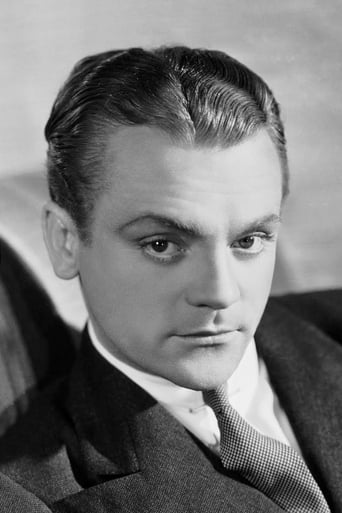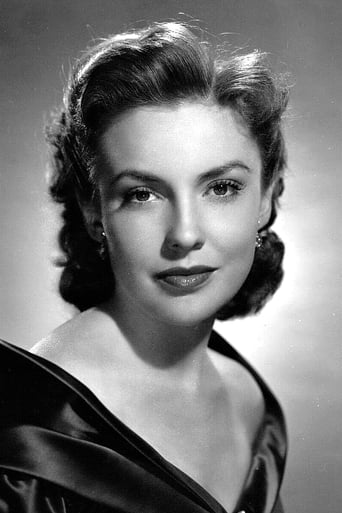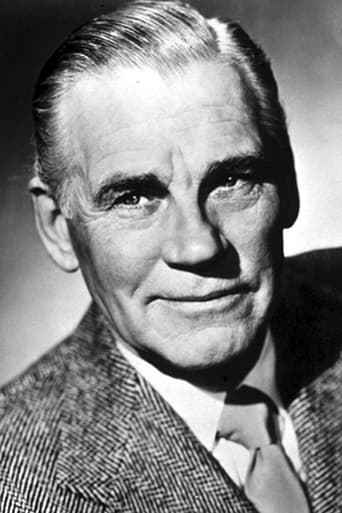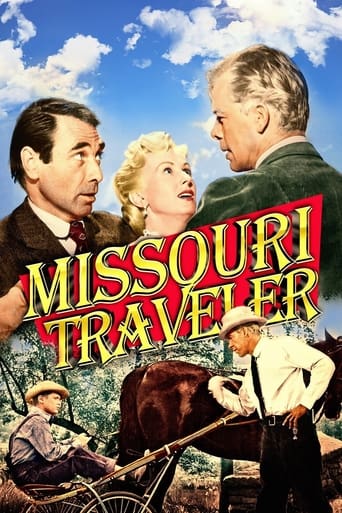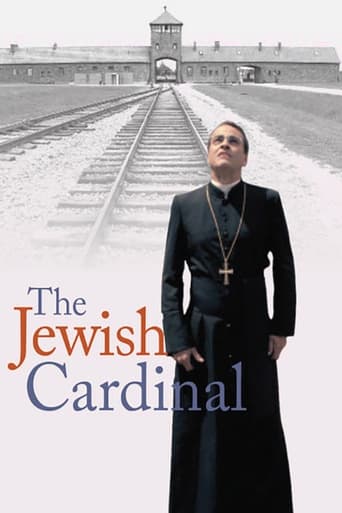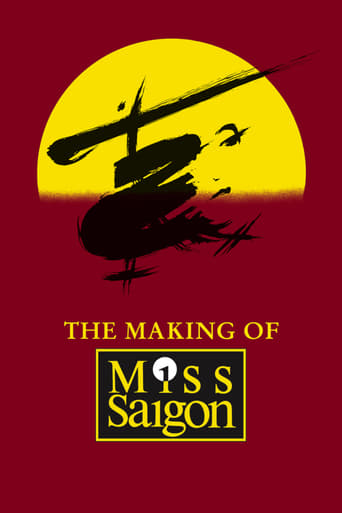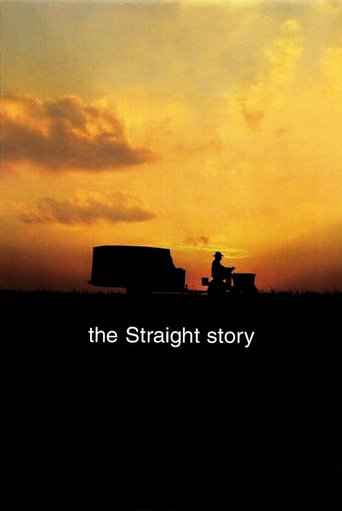
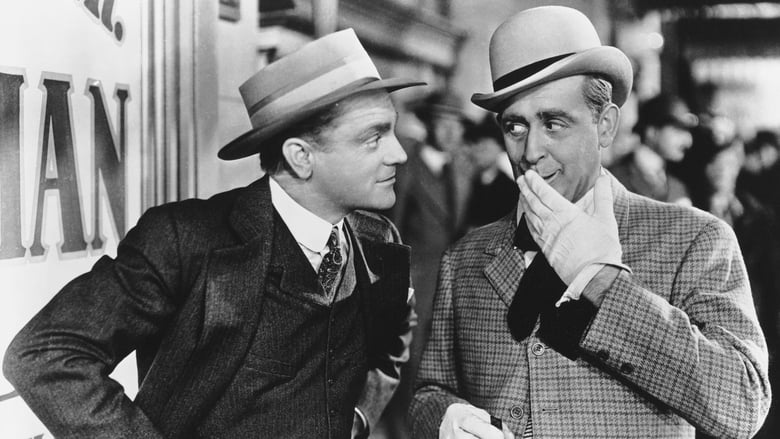
Yankee Doodle Dandy (1942)
A film of the life of the renowned musical composer, playwright, actor, dancer and singer George M. Cohan.
Watch Trailer
Cast
Similar titles

Reviews
Did you people see the same film I saw?
A film with more than the usual spoiler issues. Talking about it in any detail feels akin to handing you a gift-wrapped present and saying, "I hope you like it -- It's a thriller about a diabolical secret experiment."
what a terribly boring film. I'm sorry but this is absolutely not deserving of best picture and will be forgotten quickly. Entertaining and engaging cinema? No. Nothing performances with flat faces and mistaking silence for subtlety.
A clunky actioner with a handful of cool moments.
Theatrical luminary George M. Cohan is upset that his sister has announced her intention to quit The 4 Cohans and get married. He voices the opinion that The 3 Cohans wouldn't go over with audiences. Hence, this means the end of their long established family act. Of course, GMC would go on to establish a long entertainment career as a solo, including playwriting, and directing, as well as song writing and performing. Typical of biop films of this era, many historical details are mangled, sometimes seemingly without benefit, sometimes for dramatic enhancement or simplicity. One example occurs near the end, when FDR bestows The Congressional Medal of Honor on GMC for his several patriotic songs composed during WWI. In reality, GMC received the Congressional Gold Medal, which is appropriate for civilians. The Medal of Honor is appropriate for military deeds, only. FDR says war moral boosters can be included as military-related accomplishments. James Cagney was the perfect choice to portray GMC's various theatrical talents, most notably his dancing. Cagney is so dynamic and magnetic, and the pace of the action is sizzling. Appropriately, he won the Oscar for his performance. Fred Astaire, GMC's first choice, declined on the excuse that his dancing style was quite different from that of GMC. Although Cagney was 42, he exhibited the energy of a 16 year old in his dancing. In fact, his costar as his girlfriend or wife, Joan Leslie, was 16 or 17 during production. It's called robbing the cradle. I wonder why Joan was chosen for this role? Recently, she had costared with Gary Cooper in another popular biop: "Sergeant York": an equally extreme case of robbing the cradle. Cagney does an excellent job of mimicking GMC's eccentric dance style, emphasizing foot and leg work, with diminished participation of the upper body. I wonder if Cohan derived this from Irish step dancing, which it somewhat resembles.GMC's supposed birth on July 4, alluded to several times, technically isn't quite correct. It was July 3. However, accepting July 4 heightened the flag-waving tone of the film.Together, Douglas Craft, who played GMC as a boy and young teen, and Cagney provide the majority of periodic physical and verbal humor that added much to the enjoyment of the film. Both portrayed GMC as supremely ambitious and cocky in his talents, despite frequent putdowns.Cagney had costarred in the '30s musical "Footlight Parade", as a dance instructor. No doubt, this reminded the brass of his vaudeville background, giving them more confidence that he could pull off mimicking GMC.Jeanne Cagney, James's baby sister, 20 years his junior, played GMC's sister, Never becoming a major actress, she was included in 3 subsequent films with James. Walter Huston won a Best Supporting Actor nomination for his role as GMC's father, still handsome at around 60. This was the first film that included dialogue by an actor portraying a siting president. It is also a rare musical among the many dramas, action films and comedies in Director Michael Curtiz's film resume.Curtiz was a prominent Hollywood director for 50 years, beginning in 1912 and ending with a John Wayne western. He had directed most of Errol Flynn's most remembered films(to Flynn's displeasure) and had worked with Cagney in "Angels with Dirty Faces". His next project: "Casablanca" would win the academy award for best picture. To my mind, the present film is far more entertaining and significant, and deserving of this award. At least, Cagney won the Best Actor award. Curtiz had a reputation as being hard on his actors, but reportedly mellowed a bit for this film. Apparently, Cagney's very difficult dance part way down the White House stairs was ad libed, and left in.The dialogue between GMC and Eddie Foy is amusing, each making disparaging remarks about the other without knowing whom they were talking to. Cagney would reprise his role as GMC in the 1955 film "The Seven Little Foys" Walter Catlett, playing within his typecast strength, is the close-minded blustery stage manager whom GMC and Mary are trying to impress in his office. Irene Manning, as a highbrow singer and actress serves as the female equivalent of Catlett, with an initial very critical attitude toward GMC, eventually reversing herself.This film kicked off a series of musical biopsy or nostalgia films in the '40s and '50s. Subjects included Jerome Kern, Cole Porter, Lorenz Hart, George & Ira Gershwin, Steven Foster, Sigmund Romberg, Eddie Foy and the Harry Ruby & Bert Kalmar team.Although GMC and FDR are portrayed as chummy, the real GMC was a far right Republican and hated FDR. Nonetheless, GMC had to wait nearly 20 years, through Republican-dominated times, to receive his Congressional medal for his patriotic WWI songs.This film could be looked upon as one in a progression of films produced by Warner in the late '30s and early '40s with either a subliminal anti-Nazi message(in the case of several early Flynn-starring films)or flag-waving films during WWII. "Sergeant York", released the previous year, shares with the present film the distinction of reviving some dramatic aspects of WWI, seemingly hoping to prepare the American public for entry into another European war.. Several subsequent Warner musicals were blatant war propaganda films. This includes "This is the Army ", "Thank Your Lucky Stars" and "Hollywood Canteen". Joan Leslie was the female lead in the first of these, as well as "Sergeant York"Of course, this film would hold up even better over time, if it had been shot in Technicolor. The same is true of a number of other top musicals during this era, including "Holiday Inn" and "Sun Valley Serenade". Yes, shooting in color was expensive and troublesome with the technology of the times, but it had been done with some far less deserving films.
George M. Cohan (James Cagney) is a renown composer/singer/dancer who gets a private audience with President FDR. He recalls his life starting with born on the 4th of July and joining the family on vaudeville in The 4 Cohans. He becomes successful in a long running up-and-down show business career.It's a simple tradition biopic. Some of Cohan's life is cleaned up. Cagney is a great song and dance man. He is full of charisma and energy. It's functional for the most part. The movie has some fun song and dance including "The Yankee Doodle Boy". It is ultra-patriotic considering it's made during WWII. Cagney is dancing up a storm. I just love that he tap dances down the stairs from meeting the president. He's almost floating.
Was there anything James Cagney could not do? Well known as a crime-drama actor, here he sings, dances and delivers some incredibly funny lines, to great effect.I had never heard of George M Cohan before, though after watching the movie I find it hard to believe that I hadn't. Thus, I watched this with low initial interest, thinking it is just another musical (and I generally dislike musicals). The interest for me was to see how James Cagney fares in a musical.Turns out it is much more than a musical. It is a great biopic, with the story of the life of George M Cohan very well told. Most biopics some across as dry History Channel documentaries - this was nothing like that. The scene sequence is innovative, the dialogue very fresh, snappy and often funny, the music entertaining. I even liked the dancing (very rare for me!). Despite being over two hours long, the movie moves at a very fast pace. Not a dull moment at all.As mentioned, James Cagney is superb in the lead role, and well deserved his 1943 Best Actor Oscar (his only Oscar, it would turn out). Well supported by Walter Huston and Joan Leslie, and the remainder of the cast.Only negative is that it is a tad jingoistic. Then again, it was produced in 1942, thus was made as a US war propaganda movie, as the US had just entered World War II.
I have seen this film several times--including just recently. However, somehow I forgot to review the movie--and I noticed this today.This is a difficult film to rate, as it's so unique. After all, seeing Jimmy Cagney in the lead is a bit surreal. You don't expect to see this tough-guy performing as a hoofer. You also don't expect to see his style of tap dancing. It is NOTHING like Fred Astaire--full of grace and style. Instead, it's pure energy and is, at times, a bit gangly. Now this isn't to say it's bad--it just isn't subtle as Cagney throws EVERYTHING into the dances. His tapping is a bit more like stomping---but, it is still a marvel to watch.The film is a VERY Hollywoodized version of the life of the writer/performer George M. Cohan. Much of the guy's life is in the film but also much of the film is pure fiction meant to entertain. This is VERY typical of a film of this era. However, despite the style of dance and liberties the film takes, it is also incredibly entertaining and fun--filled with unabashed patriotism and spirit. Well worth seeing.
